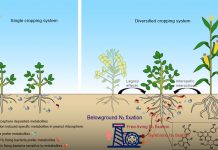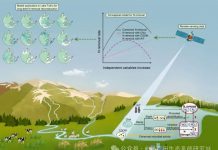Yuchun Ma Liying Sun Xiaoxu Zhang Bo Yang Jinyang Wang Bin Yin Xiaoyuan Yan Zhengqin Xiong. Mitigation of nitrous oxide emissions from paddy soil under conventional and no-till practices using nitrification inhibitors during the winter wheat-growing season. Biology and Fertility of Soils 2012 DOI 10.1007-s00374-012-0753-7.
Abstract
The net effect of no-till techniques on nitrous oxide (N2O) emissions is inconsistent and poorly quantified in comparison to conventionally tilled farming. This study assesses N2O emissions and yields from paddy fields during the wheat-growing season under conventional and no-till farming as well as mitigation of N2O evolution using dicyandiamide and chlorinated pyridine (CP) as nitrification inhibitor (NI). Both tillage practices and NIs significantly (P < 0.01) affected cumulative N2O emissions and yields. In comparison to conventional tillage the cumulative N2O emissions under no-till farming were increased by 8.2–19.3 % and the water-filled pore space was higher on most days. Relative to no-tillage the conventional tillage averagely increased the wheat yield by 6.0 % and reduced yield-scaled N2O–N emission by 44.5 %. The two NIs averagely increased the wheat yield by 9.7 % and reduced yield-scaled N2O–N emission by 67.7 %. The treatment with CP produced the highest yield with the lowest N2O emissions thus leading to the lowest yield-scaled N2O–N emission (0.15–0.17 kg N2O–N t−1 grain yield) under both tillage practices.







